Investing
Vietnam’s new regulations in energy, mineral and construction sectors
Published
10 months agoon
The Vietnamese government recently introduced the amended PDP8 implementation plan, the tariff for rooftop solar energy in 2025, new rules on management of construction activities, and the new Law on Geology and Minerals. Vilaf law firm provides analyses on these newly-promulgated regulations.
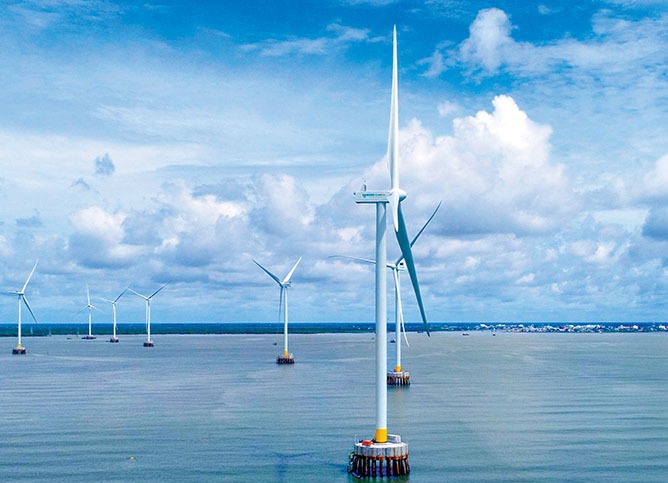
A wind power project in Ca Mau, Vietnam’s southernmost province. Photo courtesy of Ca Mau newspaper.
1. Amended PDP8 implementation plan
On April 1, 2024, the Prime Minister approved the Implementation Plan for the National Power Development Plan for the period 2021-2030 with a vision towards 2050 (PDP8 Implementation Plan) under Decision No. 262/QD-TTg.
Following a series of discussions and directives between the Ministry of Industry and Trade (MoIT) and the Prime Minister in late 2024, the Prime Minister issued Decision No. 1682/QD-TTg on December 28, 2024 to amend and update the PDP8 Implementation Plan (Amended PDP8 Implementation Plan).
The Amended PDP8 Implementation Plan came into force immediately from its signing date of December 28, 2024, and all other provisions of the original PDP8 Implementation Plan remain valid.
The key contents of the Amended PDP8 Implementation Plan include (i) outlining the detailed lists of renewable energy projects (i.e. onshore and nearshore wind energy, small hydropower (i.e. hydropower with 30 MW or less), biomass and waste-to-energy projects) for 17 provinces that not yet covered in the initial PDP8 Implementation Plan; and (ii) amending the information (such as project name, operating phases) of several renewable energy projects that were already approved in the initial PDP8 Implementation Plan.
Notably, in the Amended PDP8 Implementation Plan, the MoIT specifically instructs the local authorities to continue reviewing the implementation of inspection decisions for projects included in those decisions, as well as addressing the legal issues of projects that overlap with other master plans during implementation.
For such overlapping projects, local authorities must seek opinion from the relevant authorities before approving the investment and must ensure that a project is only allowed to proceed after all legal and overlapping issues have been resolved, and that no efforts are made to “legitimize any wrongful actions.”
It should be further noted that just a few days after the issuance of the Amended PDP8 Implementation Plan, the Prime Minister on December 31, 2024 issued Decision No. 1710/QD-TTg approving the tasks for adjusting the National Power Development Plan for the period 2021-2030, with a vision towards 2050 (i.e. PDP8).
2. Tariff for rooftop solar energy in 2025
In accordance with Official Letter No. 78/EVN-KD+TCKT dated January 3, 2025 sent from EVN to the power corporations, the tariff for rooftop solar electricity in 2025 is as follows:
– VND2,275 (equivalent to 9.35 U.S. cents) per kWh for rooftop solar systems having commercial operation date (COD) and confirmation of meter readings from June 1, 2017 to June 30, 2019; or
– VND2,039 (equivalent to 8.38 U.S. cents) per kWh for rooftop solar systems having COD and confirmation of meter readings from July 1, 2019 to December 31, 2020.
3. New regulations on management of construction activities
On December 30, 2024, the Government issued Decree No. 175/2024/ND-CP detailing a number of articles of the Law on Construction 2014 (as amended) on management of construction activities (Decree 175/2024).
Decree 175/2024 took immediate effect on December 30, 2024 and has replaced Decree No. 15/2021/ND-CP (Repealed Decree 15/2021) and Decree No. 53/2017/ND-CP (Repealed Decree 53/2017) regulating the management of construction projects and construction permits, respectively.
Amendments to requirement for economic-technical investment reports
Compared to the Repealed Decree 15/2021, Decree 175/2024 has added more investment projects for the construction of buildings that only require for preparation of economic-technical report (“báo cáo kinh tế – kỹ thuật” in Vietnamese) which need not to formulate (feasibility study report (“báo cáo nghiên cứu khả thi” in Vietnamese). These projects now include the followings:
– Investment projects for religious purposes;
– Investment projects for new construction, renovation, or upgrading with a total investment of no more than VND20 billion (approx. $800,000) (excluding costs for compensation, site clearance, and land use fees), except for cultural heritage construction projects;
– Investment projects for Group C for the maintenance or repair purposes;
– Projects of dredging and maintaining public maritime channels or inland waterways;
– Investment projects primarily involving the purchase of goods, provision of services, installation of equipment, or investment projects for repairs or renovations that do not affect the structural safety of the building, with construction costs (excluding equipment costs) under 10% of the total investment and not exceeding VND10 billion (approx. $400,000) (excluding national-level important projects, Group A projects, and public-private partnership projects).
It should be noted that the person having the authority to decide on the investment is entitled to decide the formulation of a feasibility study report (“báo cáo nghiên cứu khả thi” in Vietnamese) for the above-listed projects when the projects have specific technical or design requirements which necessitates basic designs. In other words, these projects are not subject to appraisal by specialized construction authorities.
Application of Building Information Modeling (BIM)
Under the Repealed Decree 15/2021, the use of BIM in construction activities was encouraged only. However, Decree 175/2024 now mandates the use of BIM for new construction projects of Level II and above within Group B projects and higher, starting from the project preparation stage. It is anticipated that the Ministry of Construction (MOC) will soon issue detailed guidance on the application of BIM in construction activities.
Clarification on energy infrastructure projects
Decree 175/2024 revises the scope of energy infrastructure project (“công trình năng lượng” in Vietnamese) in Annex I on classification and categorization of constructions attached to Decree 06/2021/ND-CP.
In particular, under Decree 175/2024, an energy infrastructure project refers to a standalone structure, a complex of structures, or a technological line within the following plants: hydroelectric plants, thermal power plants, nuclear power plants; wind power, solar power (excluding solar energy production equipment installed on building rooftops), geothermal power, tidal power, and waste-toenergy plants (excluding solid waste treatment facilities), biomass power, biogas power and cogeneration plants; heating, steam, and compressed air supply plants; electrical transmission lines and substations; retail gas stations, oil stations, liquefied gas stations, and other fuel or energy types; battery charging stations; and electric vehicle charging stations (excluding charging equipment or posts installed in buildings or construction components for building utilities, used for transportation vehicles, or other personal use equipment).
Moreover, Decree 175/2024 is consistent with the Repealed Decree 15/2021 in assigning the specialized construction department under the MoIT the authority to appraise construction-related documents for industrial investment projects (except those managed by the MoC), including energy infrastructure project.
However, Decree 175/2024 further clarifies that this department also has the authority to approve the feasibility study report and the construction design developed after the basic design of energy infrastructure projects built offshore (at sea) in compliance with maritime law and specialized regulations, which are outside the management of provincial people’s committees.
Legitimate land documents for issuance of construction permits
As compared to the Repealed Decree 53/2017, the new Decree 175/2024 provides more specific regulations regarding documents evidencing the legitimate land use purposes and ownership of assets attached to land, which shall be used as basis for issuing the construction permit. These documents include, among others, the followings:
– Land use rights certificates, Certificates of land use rights, and ownership of assets attached to the land, Certificates of ownership of housing and land use rights for residential purposes, Certificates of ownership of housing, or Certificates of ownership of construction works, which were issued in accordance with the land law and housing law through various periods;
– Documents eligible for the issuance of land use rights certificates or certificate of ownership of houses and other assets attached to the land but not yet granted with the certificates;
– Land documents for cases where the State has allocated land, leased land, or allowed a change of land use purpose since July 1, 2004, but having not granted with land use rights certificates or certificate of ownership of houses and other assets attached to the land;
– Land use rights certificates or decisions on land allocation or leasing by the competent authorities with the primary land use purpose for cases where construction is carried out on land used for mixed purposes according to Article 218 of the Land Law 2024;
– In cases where the investor leases land or parts of a construction work from the landowner or owner of the construction for investment purposes, the applicant for the construction permit must provide, in addition to one of the documents mentioned above, a valid lease agreement for the land or the corresponding part of theconstruction; and
– Other legal documents as stipulated by the land law.
4. New Law on Geology and Minerals
On November 29, 2024, the National Assembly of Vietnam passed the Law No. 54/2024/QH15 on geology and minerals (Law on Geology and Minerals 2024). This new law will take effect and replace the old Law No. 60/2010/QH12 on minerals, as amended, (Old Law on Minerals 2010) on July 1, 2025, except for several articles which will come into force on January 15, 2025.
Set out below are key highlights of the Law on Geology and Minerals 2024.
State policies on geology and mineral
Compared to the Old Law on Minerals 2010, the Law on Geology and Minerals 2024 introduces significant State policies regarding the exploration and extraction of minerals in Vietnam, including the following key policies:
– The State shall have strategies, master plans, and planning for geology and minerals to ensure that geological and mineral resources are protected, exploited, and used in a rational, economical, and efficient manner for sustainable economic and social development. These strategies also ensure national defense and security. Additionally, the State promotes the application of circular economy models and green economy principles in mineral extraction and processing activities;
– The State shall invest in and organize the exploration of strategic and important minerals, as well as certain minerals with high economic value and significant demand. The State shall also decide not to auction the mineral extraction rights for certain areas containing strategic and important minerals or to permit the exploration and extraction of strategic and important minerals based on intergovernmental treaties;
– The State has policies for reserving, importing, and exporting minerals in each period which are in line with the goal of sustainable economic and social development and to ensure a stable supply of raw materials for domestic production; and
– Geological and mineral data must be systematically compiled, managed centrally and consistently, and utilized effectively.
Classification of minerals
For the purposes of conducting the state managing of minerals-related activities, the Law on Geology and Minerals 2024 classifies minerals into four main groups based on their usage:
– Group I include metallic minerals, energy minerals, precious and semi-precious stones, and industrial minerals;
– Group II include minerals used as materials in the construction industry for the production of cement, tiles, sanitary ceramics, construction glass, paving stones, fine art stones, industrial lime, and refractory materials;
– Group III include minerals used as common construction materials (except for those classified in Group II and Group IV), peats, mineral muds, natural mineral water, and natural hot springs; and
– Group IV include minerals that are only suitable for use as filling materials, building foundations, constructing irrigation works, and preventing natural disasters, including: clay, laterite, minerals with other names; soil mixed with rocks, sand, gravel, or pebbles; sand (excluding riverbed sand, lakebed sand, and coastal sand areas).
Geology and minerals strategies and plans
In general, the Law on Geology and Minerals 2024 requires all mineral exploration and mineral-related activities to comply with (i) the strategies on geology, minerals, and mining industry approved by the Prime Minister; and (ii) the basic geology and minerals exploration master plan and the Group I and Group II minerals master plan – both of which are national sectoral master plans and approved by the Prime Minister. That said, the exploitation of (i) minerals for salvage mining (“tận thu khoáng sản” in Vietnamese) and (ii) Group IV minerals are not required to comply with these strategies and plans.
Authority in approving, licensing mineral-related activities
Under the Law on Geology and Minerals 2024, the Ministry of Natural Resources and Environment (MONRE) shall issue the licenses for exploration and extraction of Group I and Group II minerals. Meanwhile, the provincial People’s Committee shall have the authority in issuing the followings:
– Licenses for exploration of Group III minerals; Licenses for extraction of Group III and Group IV minerals;
– Licenses for exploration of Group I and Group II minerals and Licenses for extractionof Group I and Group II minerals in areas with dispersed and small-scale minerals as defined and announced by MONRE;
– Licenses for salvage mining of Group I, Group II, and Group III minerals; and
– Licenses for mineral exploration and extraction for natural mineral water and natural hot water based on the master plan for minerals exploration, extraction, processing and utilization that approved prior to the enactment of the Law on Geology and Minerals 2024 until there is a new replacement decision.
Detailed guidance on recovery of minerals
As compared to the Old Law on Minerals 2010, the Law on Geology and Minerals 2024 outlines detailed guidance on mineral recovery (“thu hồi khoáng sản” in Vietnamese), which is defined as combined activities aimed at extracting minerals during the implementation of construction investment projects or other activities, according to plans approved or accepted by the competent authorities. The organizations and individuals may be issued with a certificate on registration of mineral recovery in the following cases as specified at law:
– Organizations which, and individuals who, are licensed to extract or salvage minerals can recover minerals within the area of the mineral extraction/salvage investment project when carrying out basic mining construction or other activities related to mining operations, but they must report to the competent authority for review and decision;
– The project owners or investors can conduct the mineral recovery in the construction area of project works approved or permitted by the competent authority, including minerals located in areas where mineral extraction activities are prohibited, temporarily prohibited, or national mineral reserves;
– The project owners or investors can conduct dredging activities concurrently with the recovery of mineral products in the waters of seaports, fishing ports, storm shelters, inland waterways, riverbeds, lakebeds, or other waterlogged areas according to theproject or plan approved by the competent authority;
– Land users conducting the land improvement or construction activities on residential or agricultural land are permitted to recover Group III and Group IV minerals from activities related to land improvement and construction on residential or agricultural land; and
– Organizations or individuals closing a mining operation are allowed to recover minerals.
You may like
-
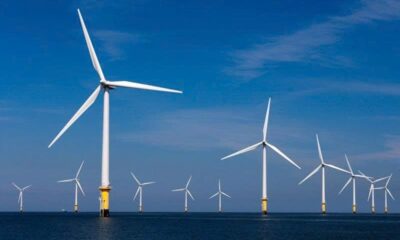

Vietnam’s Exclusive Economic Zone boasts over 1,000 GW of wind power potential: report
-
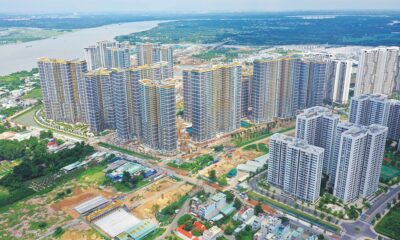

Uncertainty weighing on real estate
-
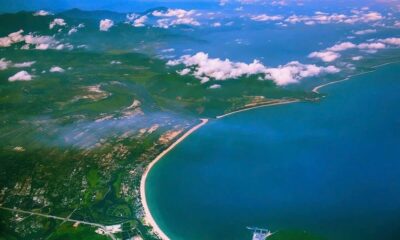

Central Vietnam city seeks $1.84 bln for 15 projects in economic zone
-
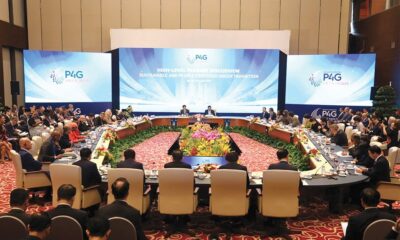

Green engagement rides high in Vietnam
-
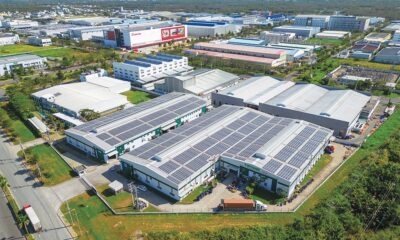

New standards being reached within green industrial parks
-
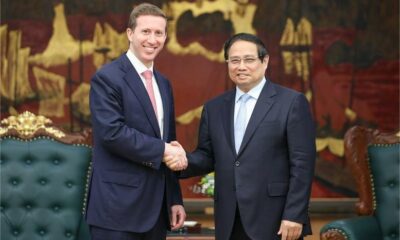

Vietnam PM asks Warburg Pincus to invest ‘further and faster’
Investing
Bac Giang International Logistics Centre launched
Published
8 months agoon
April 27, 2025Bac Giang International Logistics Centre was launched on April 22 with an investment of $168 million, and is expected to become a crucial link in the global supply chain.
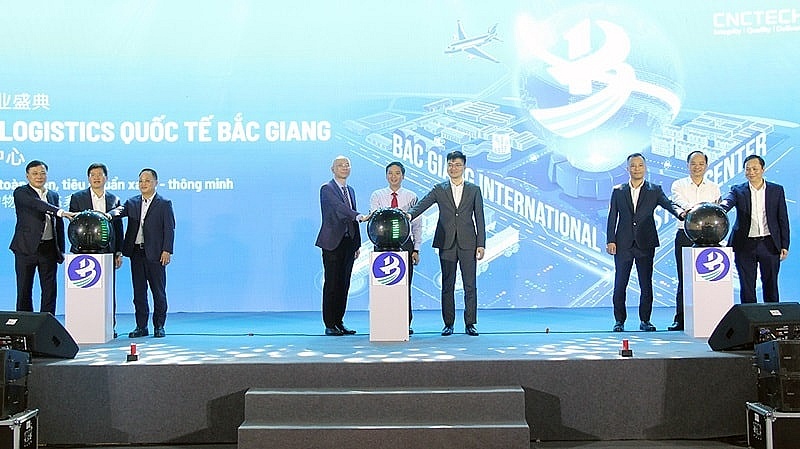 |
| Bac Giang International Logistics Centre launch |
Being invested by CNCTech Group, Dolphin Sea Air Services Corporation and Thien An Investment JSC, the logistics centre is located on National Highway 1A, which boasts first-class warehouse supply to meet the growing demand in the northern Vietnamese market.
Its strategic position within the golden economic triangle of Hanoi – Haiphong – Quang Ninh provides convenient connectivity to industrial zones and key logistics centres via national highways No.1A and No.37.
The centre is designed to meet growing demand for logistics infrastructure from businesses in Bac Giang and neighbouring provinces, positioning the area as a new node in northern Vietnam’s logistics network.
The project is a strategic product as a key component of the logistics spearhead in CNCTech Group’s industrial and logistics infrastructure ecosystem. It has been approved by the prime minister as a national level-II logistics centre, covering a planned area of 67 hectares.
At the launch ceremony, Chairman of Bac Giang People’s Committee Nguyen Viet Oanh said, “In recent years, the province’s socioeconomic development has made remarkable strides. Transportation, urban, industrial, and social infrastructure have been synchronously invested in and have yielded high efficiency. However, the province’s logistics service sector has not yet matched its potential, advantages, and socioeconomic development level. The logistics system remains fragmented, transportation costs are high, and trade delivery times are prolonged.”
Recognising this bottleneck, the local authorities have focused on directing the robust development of the logistics system, incorporating it into the provincial plan. This includes developing eight comprehensive logistics centres covering nearly 500ha, three inland container depots, and 33 inland waterway ports.
“Bac Giang, with its strategic location between Hanoi and border provinces, has long been known as a dynamic industrial hub. The remarkable development of the province’s industrial parks has created a solid foundation for the establishment of Bac Giang International Logistics Centre. This centre is not only located on vital transportation routes such as Hanoi-Lang Son Expressway but also directly connects to major border gates, optimising the transport of goods from Bac Giang to the world,” said Oanh.
 |
| A model of the logistics centre |
The project is not merely a warehousing facility, but also a symbol of the integration of modern infrastructure and advanced technology. The centre includes multifunctional warehouse areas, customs-controlled warehouses, non-tariff warehouses, and automated warehouses, meeting the needs of various industries. Notably, it integrates end-to-end logistics solutions, supporting businesses in optimising transportation costs and enhancing production efficiency.
With a long-term vision, the centre aims not only to optimise domestic supply chains but also to become a key connection point in the global logistics network.
Nguyen Van Hung, chairman of the Board of Members of CNC Tech Group, shared, “The establishment of this centre is a strategic step in developing Vietnam’s logistics infrastructure. We are committed to long-term and robust investment in this sector, as logistics is not just infrastructure but an indispensable part of enhancing the competitiveness of Vietnamese businesses on the international stage.”
Vietnam has taken strong action to promote green development among businesses, amid the country facing challenges in finance and technology.
Vietnamese Party General Secretary To Lam told the fourth Summit of the Partnering for Green Growth and the Global Goals 2030 (P4G), organised last week in Hanoi, that Vietnam is focused on strategic breakthroughs to prepare for a national development process that is fast, inclusive, and sustainable.
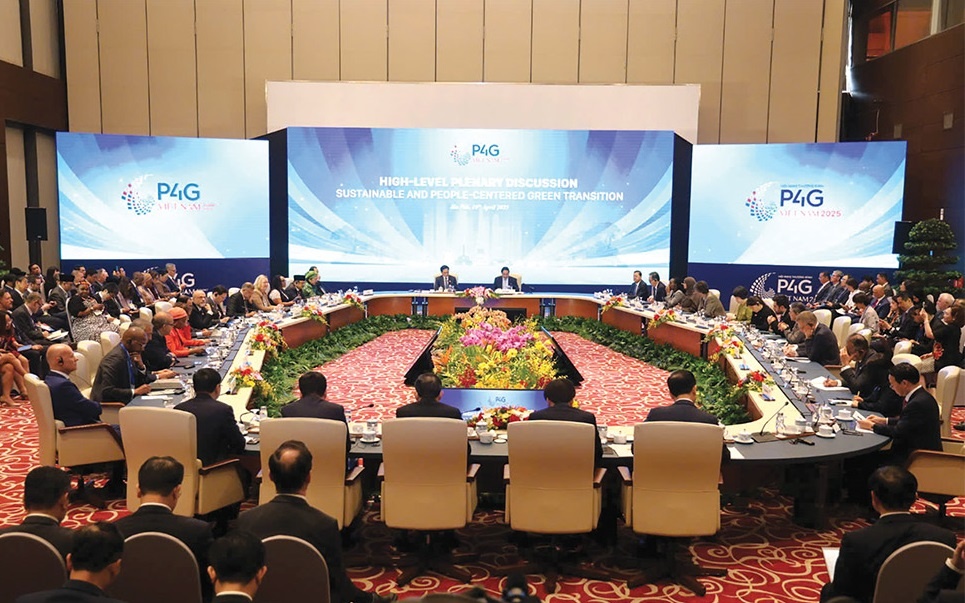 |
| The summit in Hanoi covered areas from finance and banking to agriculture and technology Photo: Dung Minh |
“We will strongly transform political commitments into practical actions, creating motivation for businesses and the whole society to participate in sustainable economic development, in which green institutions are the decisive foundation,” General Secretary Lam stressed at a hall attended by government leaders, UN representatives, diplomats, experts, and entrepreneurs.
General Secretary Lam also stressed that when it comes to green transformation, despite being a developing country with a transitional economy and limited resources, Vietnam has achieved some important results.
Besides making a 2050 net-zero commitment in 2021, Vietnam also endorsed six global initiatives at the time, on forest and land use, methane, clean power transition, sustainable food and agriculture, and more.
“Vietnam is now a leading country in supplying renewable energy in ASEAN, with wind and solar power capacity accounting for two-thirds of ASEAN’s total capacity,” he said.
“Additionally, Vietnam is also a good example of encouraging sustainable agriculture. The initiative to develop one million hectares of high-quality and low-emission specialised rice is a pioneering model that many partners and international organisations are interested in.”
A greener future
Vietnam is an active and responsible member of all multilateral mechanisms and major initiatives on green growth and energy transition such as the Paris Agreement on climate change, the Just Energy Transition Partnership, and the P4G.
“However, as a developing country with a transitional economy, we also face many challenges in terms of financial resources, technology, personnel, and resilience to the impacts of climate change and geopolitical fluctuations globally,” said General Secretary Lam.
The summit adopted the Hanoi Declaration, strongly affirming commitments to sustainable growth with people at the centre, and a determination to collaborate responsibly in addressing current global challenges. Vietnam is expected to enjoy continued support from the international community in its journey to a green economy including energy transition.
According to the World Bank, to ensure sufficient funding for responding to climate change, mobilising domestic finance is possible, but external support is needed.
Overall, Vietnam’s total incremental financing needs for the resilient and decarbonising pathways could reach $368 billion over 2022–2040, or approximately 6.8 per cent of GDP per year.
The resilient pathway alone will account for about two-thirds of this amount, as substantial financing will be required to protect the country’s assets and infrastructure as well as vulnerable people.
The cost of the decarbonising pathway will mainly arise from the energy sector – investments in renewables and managing the transition away from coal might cost around $64 billion between 2022 and 2040. All the figures are in net present value terms at a discount rate of 6 per cent.
This $368 billion in financing needs will include $184 billion from private investments or about 3.4 per cent of GDP annually, $130 billion or about 2.4 per cent of GDP annually from the state budget; and $54 billion or about 1 per cent of GDP per year from external sources.
Choi Youngsam, South Korean Ambassador to Vietnam, said that within the P4G framework, South Korea and Vietnam have completed or are currently implementing joint projects in areas such as food and agriculture, energy, water, and urban development.
“Looking ahead, both sides are expected to broaden and deepen their partnership under the P4G framework,” he said.
At the P4G Summit held in Seoul in May 2021, the two governments signed the Framework Agreement on Cooperation in Response to Climate Change, laying a solid policy foundation for the implementation of international emissions reduction ventures.
“On this basis, I hope that South Korea will leverage its technological expertise and financial resources to carry out greenhouse gas emission reduction projects in Vietnam, with both countries mutually recognising the results,” Ambassador Youngsam said.
“This would contribute to establishing a win-win model of emissions reduction cooperation. At the same time, I look forward to seeing active engagement from South Korean enterprises possessing green technologies, in close collaboration with the Vietnamese government.”
Encouraging developments
Deputy Minister of Science and Technology Hoang Minh said at a policy dialogue on the sidelines of the P4G 2025 that the active participation and strong cooperation from stakeholders – from the public and private sectors to international organisations – can help materialise Vietnam’s aspiration of an efficient and sustainable innovative startup ecosystem.
“Innovation, creative entrepreneurship and collaboration are key to solving environmental problems, while encouraging the development of a circular economy,” he said.
Vietnam currently has over 4,000 innovative startups, including two unicorns valued at over $1 billion, 11 companies valued at over $100 million, more than 1,400 startup support organisations, 202 co-working spaces, 208 investment funds, and 35 business promotion organisations. Among these, it is estimated that around 200–300 companies focus on green transition, covering areas such as renewable energy, environmental technology, sustainable agriculture, and the circular economy.
According to the Vietnamese Ministry of Foreign Affairs, hosting the fourth P4G Conference is of great significance to Vietnam. It is aimed to boost its role as a good friend, a reliable partner, and a responsible member of P4G and the international community. Moreover, it is also aimed to reaffirm its commitment to sustainable development, energy transition, and the goal of carbon neutrality by 2050. Besides that, it is aimed at contributing to raising awareness of international cooperation and encouraging the role and voice of developing countries in the sector of green growth and sustainable development.
| Pham Minh Chinh, Prime Minister
For Vietnam, together with digital transformation, we identify green transition as an objective necessity, a key factor, and a breakthrough driving force to promote rapid growth and sustainable development. This aligns with the strategic goal of becoming a developing country with modern industry and upper-middle income by 2030, and a developed, high-income country by 2045, while also contributing to the gradual realisation of Vietnam’s commitment at COP26 to achieve net-zero emissions by 2050. From practical experience with initial positive results, especially in renewable energy, green agricultural development, and participation in multilateral mechanisms and initiatives on green transformation, as the host of the fourth P4G Summit, Vietnam has three suggestions for discussions which pave the way for further cooperation in the coming time. First is to perfect green mindset, with a focus placed on the development of science and technology, innovation, and digital transformation linked to green growth. This includes recognising that green resources stem from green thinking, green growth is driven by green transition, and green resources arises from the green awareness of people and businesses in nations and regions throughout the world. Second is to build a responsible green community, in which, the government plays a guiding role, encouraging, and ensuring a stable and favourable institutional environment for green growth. The private sector functions as a core investor into technological development and the dissemination of green standards. The scientific community take the lead in developing green technologies and training green human resources. Meanwhile, citizens continuously enhance their green awareness, truly becoming beneficiaries of the outcomes of green transformation. Thirdly, it is necessary to promote international cooperation and robust multilateral green cooperation models, particularly public-private partnerships, South-South cooperation, North-South cooperation, and multilateral cooperation frameworks. This is aimed at removing institutional barriers, enhancing access, and speeding up the flow of green capital, green technology, and green governance. Developed countries should take the lead in fulfilling commitments to provide financial, technological, and institutional reform support. Meanwhile, developing countries would need to leverage their internal strengths and effectively utilise external resources. |
Investing
Public-private partnerships a lever for greener innovation
Published
8 months agoon
April 26, 2025Public-private partnerships are no longer a supporting mechanism, but a strategic pillar in the global pursuit of the green transition.
The high-level dialogue between government leaders and businesses at the 2025 P4G Vietnam Summit last week, chaired by Prime Minister Pham Minh Chinh, brought together senior officials, global experts, international organisations, and private sector leaders.
They recognised that the climate crisis, digital transformation, and resource depletion are converging in ways that demand not only innovation, but deep and long-term collaboration between the public and private sectors.
UN Deputy Secretary-General Amina J. Mohammed acknowledged Vietnam’s leadership in renewable energy, noting its potential to attract trillions in sustainable investment.
“Emerging economies must accelerate the adoption of new investment models, particularly those that align private capital with green infrastructure priorities. Governments must work with the private sector to expand ambition, strengthen accountability, and deliver real impact,” she said.
From Italy, Prime Minister’s Climate Envoy Francesco Corvaro stressed that public-private partnerships (PPPs) are indispensable in addressing climate finance gaps. Drawing from Italy’s experience, he underscored the importance of public investment as a risk mitigator, enabling private sector participation in clean energy and smart infrastructure projects.
“Public investment can unlock private capital, but local authorities must lead with clear priorities and long-term vision,” Corvaro noted. “You can’t talk about renewables, AI, or digital infrastructure without modern, resilient grids, and that requires strong public-private alignment.” he said
Alejandro Dorado, Spain’s High Commissioner for Circular Economy, argued that the case for stronger PPPs lies at the intersection of two accelerating forces: the environmental-climate crisis and a wave of disruptive technologies.
“In a world where AI, green technologies, and digitalisation are reshaping the global economy, the clock is ticking. According to the Intergovernmental Panel on Climate Change, we have less than a decade to prevent irreversible climate disaster. Meanwhile, the World Economic Forum has identified biodiversity loss as one of the most severe economic risks,” he said.
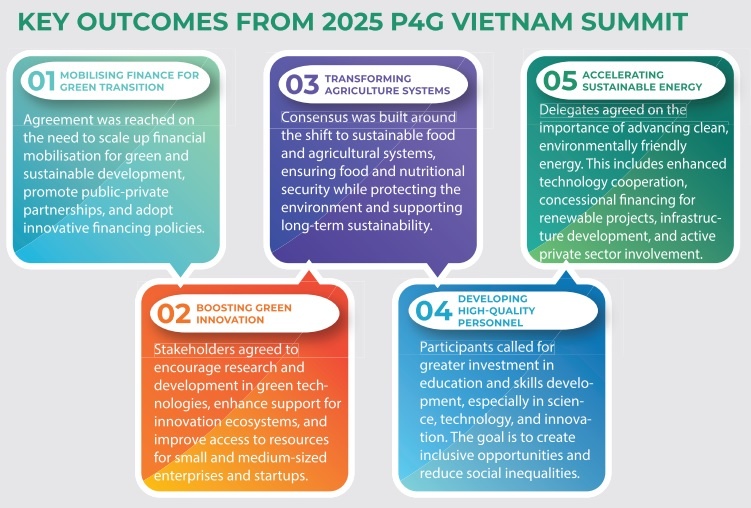 |
Dorado added that while multilateralism is being questioned or weakened in some quarters, the need for cooperation has never been more urgent – both to solve environmental challenges and to harness the transformative potential of innovation.
“No government or business can tackle these crises alone. Public authorities must provide the regulatory frameworks, fiscal incentives, and infrastructure deployment needed at scale to safeguard the common good,” he stressed.
From the business side, Stuart Livesey, country representative of Copenhagen Infrastructure Partners (CIP), provided a frank but optimistic outlook. Livesey stated CIP’s commitment to supporting Vietnam’s transition, but emphasised the need for enabling conditions.
“What we seek are clear, bankable projects underpinned by stable regulatory frameworks, collaborating with strong local partnerships. This is where public-private cooperation becomes not just helpful, but essential,” Livesey noted. “Over the next 10-15 years, the offshore wind sector and green energy consumers will trigger massive demand for new technologies, digital solutions, and skilled labour.”
To meet this demand, CIP is investing not only in infrastructure, but also in capacity building, research and development, and local supply chain development through partnerships with Vietnamese universities.
Still, he acknowledged barriers. “Technological application and innovation in green projects face challenges, from long-term financing constraints and skilled labour shortages to fragmented policy signals. These are not unique to Vietnam, but they require proactive, tailored local solutions,” he said. “Addressing issues such as grid availability, regulatory clarity, and inter-ministerial coordination will be critical.”
Tim Evans, CEO of HSBC Vietnam, stated that the banking sector is ready to facilitate green finance, particularly in sectors aligned with national climate targets.
“We see ourselves as a bridge between global capital and local sustainability goals. The clearer the pipeline of bankable, climate-aligned projects, the faster we can move capital,” he noted. “What’s crucial now is consistency in policy and coordination among stakeholders to ensure these projects reach maturity.”

Bac Giang International Logistics Centre launched

Vietnam’s Exclusive Economic Zone boasts over 1,000 GW of wind power potential: report

Uncertainty weighing on real estate

Central Vietnam city seeks $1.84 bln for 15 projects in economic zone

